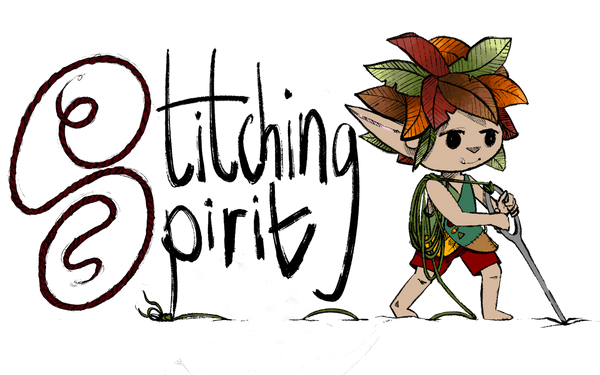5 Easy Embroidery Stitches You Can Learn in One Afternoon
Looking to start embroidery but not sure where to begin? Whether you're brand new or revisiting an old hobby, these five beginner embroidery stitches are perfect for learning the basics — and you can master them all in just one afternoon.
Let’s jump in with a needle, some thread, and a whole lot of creativity.
1. Running Stitch
Best for: Outlining shapes, creating borders
The running stitch is one of the simplest embroidery stitches and is often used as a warm-up. It creates a dashed-line effect that’s clean, quick, and great for minimal designs.
How to do it:
-
Bring your needle up through the fabric.
-
Move forward a short distance and push the needle back down.
-
Repeat in a straight or curved line.
2. Backstitch
Best for: Text, outlines, detailed shapes
The backstitch creates a solid line, making it ideal for outlining or stitching letters. It’s slightly more structured than the running stitch but still very beginner-friendly.
How to do it:
-
Bring the needle up.
-
Go forward one stitch length and insert the needle.
-
Come back up one stitch ahead.
-
Go back and insert it into the end of the previous stitch.
📌 Common Use: Backstitch is often used in modern embroidery patterns for quotes or names.
3. Satin Stitch
Best for: Filling shapes, adding bold blocks of colour
The satin stitch is a sleek way to fill in areas and add a smooth, professional finish. This stitch brings texture and colour into your designs with a simple, back-and-forth motion.
How to do it:
-
Outline your shape lightly with pencil or stitches.
-
Bring the needle up on one side, and down directly across the shape.
-
Continue stitching closely side by side for even coverage.
🎨 Pro Tip: Use a hoop and even tension to prevent bunching.
4. Chain Stitch
Best for: Decorative outlines, lettering, vines
The chain stitch creates a series of looped stitches that resemble a chain, making it beautiful for borders, text, and organic shapes like vines or waves.
How to do it:
-
Bring the needle up and then go back down in the same hole, forming a small loop.
-
Before pulling tight, bring the needle up just in front of the hole and catch the loop.
-
Repeat, making loops connected in a row.
-
Anchor the last loop with a tiny straight stitch.
🌿 Visual Appeal: Chain stitches are perfect for embroidery vines and flower stems.
5. Lazy Daisy Stitch
Best for: Petals, leaves, whimsical designs
The lazy daisy stitch is a variation of the chain stitch and is commonly used to create simple, looped petals and floral designs. It's fun, fast, and full of charm.
How to do it:
-
Bring the needle up and go back into the same hole to form a loop.
-
Bring the needle up just above the original hole, catching the loop.
-
Make a small anchoring stitch to hold it in place.
-
Repeat to create multiple petals in a circle.
🌼 Design Tip: Use different colours for multi-petal flowers or combine with French knots for flower centres.
Final Thoughts: Start Stitching in No Time
These five easy stitches form the foundation of countless hand embroidery designs. From minimalist outlines to full floral motifs, you’ll be amazed how quickly you can create beautiful, handmade pieces — no advanced skills required.
🧵 Quick Recap of the 5 Stitches:
-
Running Stitch – simple dashes for outlines
-
Backstitch – solid, clean lines for lettering
-
Satin Stitch – smooth and sleek for filling shapes
-
Chain Stitch – beautiful loops for outlines and texture
-
Lazy Daisy – perfect for flowers and petals
All these stitches you can learn on the Stitching Spirit YouTube Channel -
Watch for a more visual aid in learning these stitches - Watch here
